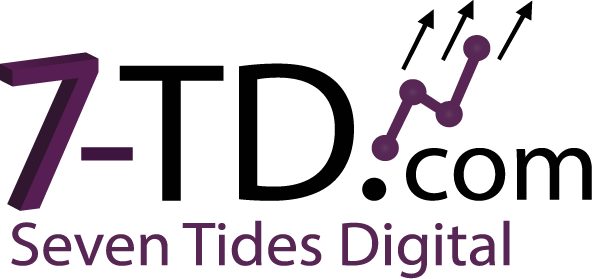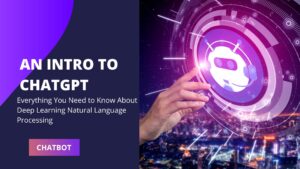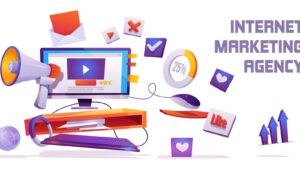At one time, Artificial Intelligence, Data-Driven Marketing, and voice-based search engines (VSEO) were frenzied ideas bordering on absurdity. These are today some of the most prominent technological trends in digital marketing.
If your digital marketing agency wants to remain relevant in the online market, it must keep up with the latest developments.
We’ll discuss the top digital marketing trends you should not overlook this year, as they can help your company endure and thrive in this era of constant changes in marketing.
Facebook, TikTok and LinkedIn
Contrary to what the media reports say, Facebook will not go away, and for specific brands, it may be more critical than TikTok, which is speedily growing. Recent data is increasing LinkedIn activity. But, this is all about Strategy First – so don’t blindly believe the news examines the people who are your customers as well as where they make sure you are focusing your efforts on the right way on that platform, not just according to what the news reports tell you to be.
Video Marketing
Video is among the most recent new trends in digital marketing. Fifty-two customers say watching videos about products makes them more confident when making online purchases. Marketers are drawn to videos because they know their customers also love them. 72% of businesses claim that video has increased their conversion rates.
People want to feel and experience a real-time connection. Live videos can do that! Additionally, marketers are following the trend of creating videos. They eliminate the need to call by providing a personalized response to prospective customers. They’d instead view videos rather than sit making a phone call.
It is also true that Google places websites with videos more highly. This is because videos are 50 % more likely to be seen, meaning they have a low bounce. People love content that speaks to them, and videos are a great way to do this. The best part is that you can create interactive video content. The primary goal should be to make videos that are engaging and personalized. So, it is safe to claim that videos are an exciting future for marketing.
AI-Powered Optimization
Artificial Intelligence is the tech behind various services, such as chatbots, the creation of content, and search engines. It has seen a significant increase in its use since the beginning of the COVID-19 epidemic.
According to PwC research of more than 1,000 U.S.-based firms, 52% have seen an increase in their AI implementation plans. The significant benefits are:
Content creation is a crucial component. Jarvis provides an example of an AI-powered application “trained to produce innovative, unique content.” The top SEO experts have taught Jarvis to create blog posts and web copy.
AI can also study search patterns and consumer behaviour patterns and use information from social media platforms such as Instagram or blog content to help companies determine how their customers come across their products and services.
One company that has put AI at the core of its business model is Google. Since the last several years, their use of AI has enabled the search engine to know more precisely what users are searching for and what type of content is most beneficial to their goals of searching.
Visual Search
Using an optical lens, users can upload pictures to search the internet and receive more specific results. The most well-known image search engines work listed below:
- Pinterest Lens
- Google Lens
- CamFind
- Bing Visual Search
Visual search is a great way to give marketers an advantage over their rivals, considering that more than 600 million visual searches are done on Pinterest monthly.
Influencer Marketing
This trend appears to last, with many companies opting to tap into the massive following of celebrities and influencers instead of spending money on traditional advertisements. The number of people who read them has been declining for the past decade. Another benefit of leveraging influencer marketing is that, typically, they’re skilled and knowledgeable content creators. Businesses do not just benefit from reaching a more significant population but also gain access to new and exciting content.
Blockchain & Cryptocurrencies
If you’re working in the field of digital marketing, then you shouldn’t be able to ignore the blockchain and cryptocurrency.
Blockchain is a distributed ledger system that lets users transfer assets without having a third party verify the transfer. Also, it eliminates the middleman.
Finance has been the most well-known sector for this technology. Still, as these technologies expand into new fields, such as marketing via digital channels, we’ll witness more of these technologies emerge on a broader scale.
Cryptocurrency is a different trend that has steadily increased since its inception in 2009. It’s a non-regulated currency that has minimal fees for trading and transactions. This is ideal for digital marketers that require immediate payments!
The Creator Economy
We’re no longer in a period of huge-scale TV productions. Some have even suggested that”the ” golden age of television” is over. We’re now in an age of creators, meaning that consumers can interact directly with independent content creators like those you can find on YouTube and other niche Substacks.
There are 50 million creators. Two million of them earn a full-time income (4 percent), and 47 million earn a part-time income:
The creative economy is believed to be driven by the desire to earn an income from a satisfying and self-sufficient profession. However, consumers want to relate to others they can relate to.
In this economy of creators, businesses must engage with independent content creators with highly engaged viewers.
In this context, the three trends we anticipate observing are:
- Creators are shifting their most popular fans off social media platforms and onto their apps, websites, and instruments for monetization (such as Substack)
- Creators become company founders, like fitness YouTubers launching their supplement brands.
- Creators are gaining influence in the media world as consumers interact with creators of unique content instead of television companies.
Social Media Stories
Snapchat became the initial company to spark the idea of ” Stories.” Then Instagram and Facebook were introduced before, and then YouTube, LinkedIn and Twitter introduced their formats for stories using different names.
Stories are posts that go away within 24 hours. While they may seem like a simple idea (or maybe due to it?), stories enable marketers to share authentic content and communicate on a more personal level audience:
Here are some suggestions on how to utilize social media to interact with your followers:
- Make use of polls in Instagram Stories.
- Include links on your Facebook and Twitter Story
- Utilize the benefits of Snapchat geofilters
- Add location tags
- Include mentions of other brands and fans.
- Try live video in the process of creating Stories.
- Invite followers to learn more with a clear call-to-action
Search engine optimization and Content Marketing
The way users search for information on the internet is now a significant conversation point. People are increasingly making use of visual searches as well as search engines that use text and voice.
Semantic searches are also experiencing an increase in search engines employing AI to discover implicit or contextual meanings in the text. However, users do not necessarily have to use exact language to obtain relevant results. Using similar words and phrases, Content marketers can reach their target audience more effectively than just keywords.
Chatbots
One way to implement conversational marketing involves chatbots. Chatbots use AI technology to deliver humans-like, automated messages to internet users in real time:
Surveys have shown that:
- The most significant advantages of chatbots for businesses are 24-hour support (64 percent), immediate response to questions (55 percent) and responses to basic questions (55 percentage).
- Uberall has discovered that most users have positive experiences using chatbots.
- Juniper Research predicts that eCommerce chatbot transactions will be 112.25 billion by 2023.
- In 2024 Insider Intelligence predicts that chatbot-based purchases of consumer goods globally will be 142 billion, which is an increase from $2.8 billion in 2019.
Many customers enjoy chatbots as they are available 24/7, respond promptly to questions, and can accurately record their complete purchase history. Virtual assistants can provide exceptional customer service by meeting the customer’s requirements while automating tedious tasks. Freeing up your resources to focus on more critical studies.
As more customers become accustomed to chatbots, they’ll be more critical to customers’ satisfaction.
Progressive Web Apps (PWAs)
Progressive Web Applications are web pages that function like mobile applications but with an app’s functionality for mobile devices native to the device. PWAs have fast load times, allowing users to receive push notifications, offline use, and more, but are not restricted to Android and iOS. PWAs let developers develop web-based apps for any device which functions as a mobile application.
With page views for a mobile rising year-over-year in the range of 57% across the globe, mobile is more critical than ever for any digital plan.
Therefore, PWAs will increase in popularity because the revolution in mobile technology advances with speed.
Personalization
The results of surveys show that 63 percent of customers are irritated by generic advertisement pop-ups. 90% of consumers are more likely to back brands that customize their preferences.
The streaming platform Netflix and Amazon Prime Video have garnered an enormous loyal customers by personalizing content.
Cadbury’s developed a customized advertisement that pairs the Dairy Milk flavour with users using information taken from Facebook.
Big Data and Deep Learning
The market for big data will continue to expand exponentially. According to Statista, the total amount of data consumed worldwide is predicted to grow to more than 180 Zettabytes in 2025.
They also predicted that the market for significant data segments could reach $113 billion in 2027, with the market capturing 45% of the software industry.
As big data becomes greater in power, requirements for the privacy of user data increase in importance (the General Data Protection Regulation (GDPR) was an unprecedented global change in data privacy. In contrast, the California Consumer Privacy Act (CCPA) was more local).
In this sense, big data is a two-edged sword, yet one that most digital marketers will be able to resist soon.
The various uses of big data to market include:
- Implement cost-effective KYC (Know Your Customer) procedures.
- The application of web analytics and business intelligence tools
- Utilization in advanced personalized and targeted methods to enhance customer experiences and acquisition
- The use of attribution models based on data (such as those that Google recently revealed) to mitigate the loss of cookies from third parties (more on this in trend #27)
Last Words
Digital marketing isn’t a stagnant field, mainly because the changes in the area happen over time. If you’d like to succeed in a Digital Marketing Agency, it’s essential to be aware of the most recent trends, or at least be mindful of them to incorporate them into your marketing plan.
These are only a few of the most prominent digital marketing trends to be thinking about adopting in 2022 to keep ahead of the market and bring new customers to your business. Make sure to incorporate these relevant and essential developments into your strategy to ensure that you remain competitive in the marketplace and do not spread your resources too thin.







